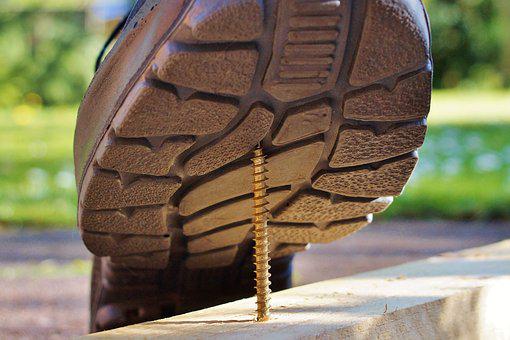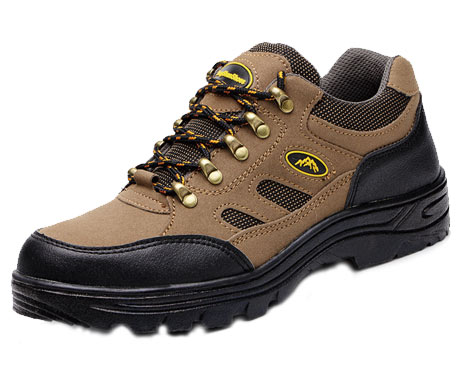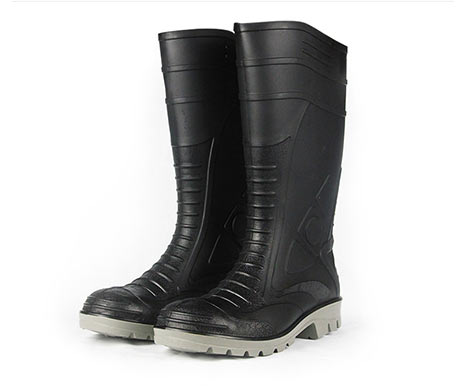If you work in a warehouse or an industrial position, you will often hear or even wear safety shoes or safety boots. Safety shoes provide protection for our feet, just like other personal protective equipment. More and more companies are requiring employees to wear shoes that protect their feet at work to ensure they can work better and avoid injuries to their feet. But do you really know that? Do you know the difference between safety shoes and safety boots? Have you ever wondered whether you should wear safety shoes or safety boots at work?
By reading this article, you will understand the difference between safety shoes and safety boots, and make the appropriate choice based on their different advantages and disadvantages.
Safety shoes/boots, also known as "work boots", are footwear that protects the foot from falling objects, compression, or punctures. Safety shoes/boots have steelhead and are usually used in conjunction with a baseplate. Safety shoes/boots help protect your feet from serious injury.

Shoe Height
You can distinguish safety shoes from safety boots by checking to see if the shoe covers your ankle. A safety shoe looks like a normal shoe. It doesn't cover your ankle. Compared to a safety shoe, a safety boot should cover at least your ankle, usually up to the middle of your calf.
Shoe Weight
Traditional safety boots are often heavy, which can lead to situations where safety boots are not appropriate. Safety boots are the most common type of safety shoe, with a wider range of features including toe protection, non-slip soles, and an anti-penetration midsole. Safety shoes have similar characteristics to safety boots but do not provide the same level of protection and support.
Safety shoe advantages
 -Safety shoes are lighter: Safety shoes are usually much lighter than safety boots because they are smaller in size and volume. Imagine the difference between wearing lightweight shoes and wearing heavy shoes to work all day. Wearing lightweight shoes can help reduce fatigue.
-Safety shoes are lighter: Safety shoes are usually much lighter than safety boots because they are smaller in size and volume. Imagine the difference between wearing lightweight shoes and wearing heavy shoes to work all day. Wearing lightweight shoes can help reduce fatigue.
-Safety shoes are less irritating: Safety shoes are low-top styles. Safety boots cover the ankle or reach the middle of the calf. Many people find high-top boots irritating to the ankle or leg. Wear low-top safety shoes for extra comfort.
-Safety shoes have more comfortable insole and outsole: Some safety shoes are based on sneaker insole and outsole, which are very comfortable and supportive.
-Corporate Image: Safety shoes are available in "formal" or "corporate" styles for managers or office workers who need security protection.
Safety boot's advantages
 -Safety boots are more durable: Premium brands of leather safety boots remain the most durable and hardy safety shoe option. The soles of safety boots are made of strong materials that can withstand harsh environments.
-Safety boots are more durable: Premium brands of leather safety boots remain the most durable and hardy safety shoe option. The soles of safety boots are made of strong materials that can withstand harsh environments.
-Safety boots are easier to wear: The side zipper design on modern safety boots is very popular because they are easy to slip on and off. Safety shoes are usually designed with shoelaces, which need to be adjusted when they are put on or taken off.
-Safety boots offer more protection: Safety boots offer more protection from hazards such as chemicals than synthetic safety shoes.
-Ankle support: Safety boots that cover the ankle may cause irritation in the ankle or leg, but the support they provide for the ankle is an advantage.
The difference between safety boots and safety shoes allows you to choose the right foot protection based on your work environment and personal preferences. T-safety provides you with a variety of options. If you need them, please contact us.
Copyright © Hebei Sinotools Industrial Co.,Ltd. All Rights Reserved | Powered by  Sitemap
Sitemap